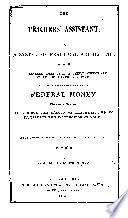 | Arithmetic - 1845 - 196 pages
...10 d. CASE 2. When the two extremes and number of terms are 1 given, to find the common difference. RULE. Divide the difference of the extremes by the number of terms, less one ; the quotient will be the common difference. EXAMPLES. 1. Twenty and sixty are the two extremes of... | |
 | Horatio Nelson Robinson - Arithmetic - 1845 - 310 pages
...of the extreme terms, or mean term, by the number of terms. RULE 3. To find the common difference. Divide the difference of the extremes by the number of terms less one. RULE 4. To find the number of terms. Divide the difference of the extreme terms by the common difference,... | |
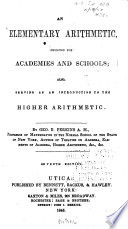 | George Roberts Perkins - Arithmetic - 1846 - 266 pages
...first term, the last term, and the number of terms, to find the common difference, we have this • RULE. Divide the difference of the extremes by the number of terms, less one,. EXAMPLES. 1. The first term of an arithmetical progression's 5, the last term is 176, and the number... | |
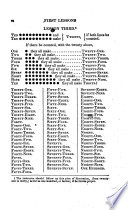 | Arithmetic - 1846 - 258 pages
...The first term, the last term, and the number of terms be ing given, to find the common difference. RULE. — (') Divide the difference of the extremes by the number of terms less 1, and the quotient will be the common difference. liiieslinn. — 1. How do you find the common difference?... | |
 | Almon Ticknor - Arithmetic - 1846 - 274 pages
...first term, the last term, and the number of terms being given, to find the common difference. RULE I. Divide the difference of the extremes by the number of terms, less 1, and the quotient will be the common difference sought. 1. The extremes are 3 and 39, and the number... | |
 | Pliny Earle Chase - Arithmetic - 1848 - 244 pages
...Then the difference of the extremes 24, must be 8 times the common difference, which is therefore 3. RULE. \ Divide the difference of the extremes by the number of terms less one, and the quotient will be the common difference. This difference repeatedly added to the less, or subtracted from the... | |
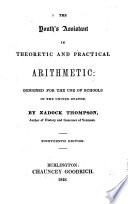 | Zadock Thompson - Arithmetic - 1848 - 184 pages
...first term, the last term, and the number of terms given to find the common difference. RDI.E. — Divide the difference of the extremes by the number of terms, less 1, and the quotient will be the common difference. 2. If the first term of a series be 8, the last... | |
 | George Roberts Perkins - Arithmetic - 1849 - 344 pages
...the first term, the last term, and the number of terms, to find the common difference, we have this RULE, Divide the difference of the extremes by the number of terms, less one. EXAMPLES. 1. The first term of an arithmetical progression is 5, the last term is 176, and the number... | |
 | Nathan Daboll, David Austin Daboll - Arithmetic - 1849 - 260 pages
...CASE n. • ' The first term, last term, and number of terms given, to f,nd the common difference. RULE. Divide the difference of the extremes by the number of terms less 1, and the quotient will be the common difference. EXAMPLES. 1. A man bought 17 yards of cloth in arithmetical... | |
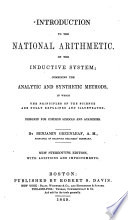 | Benjamin Greenleaf - Arithmetic - 1849 - 336 pages
...more than the number of differences ; therefore, 9 -j- 1 = 10, is the number of terms in this series. Hence the following RULE. — Divide the difference of the extremes by the common difference, and the quotient, increased by 1, will be the number of terms required. EXAMPLES... | |
| |